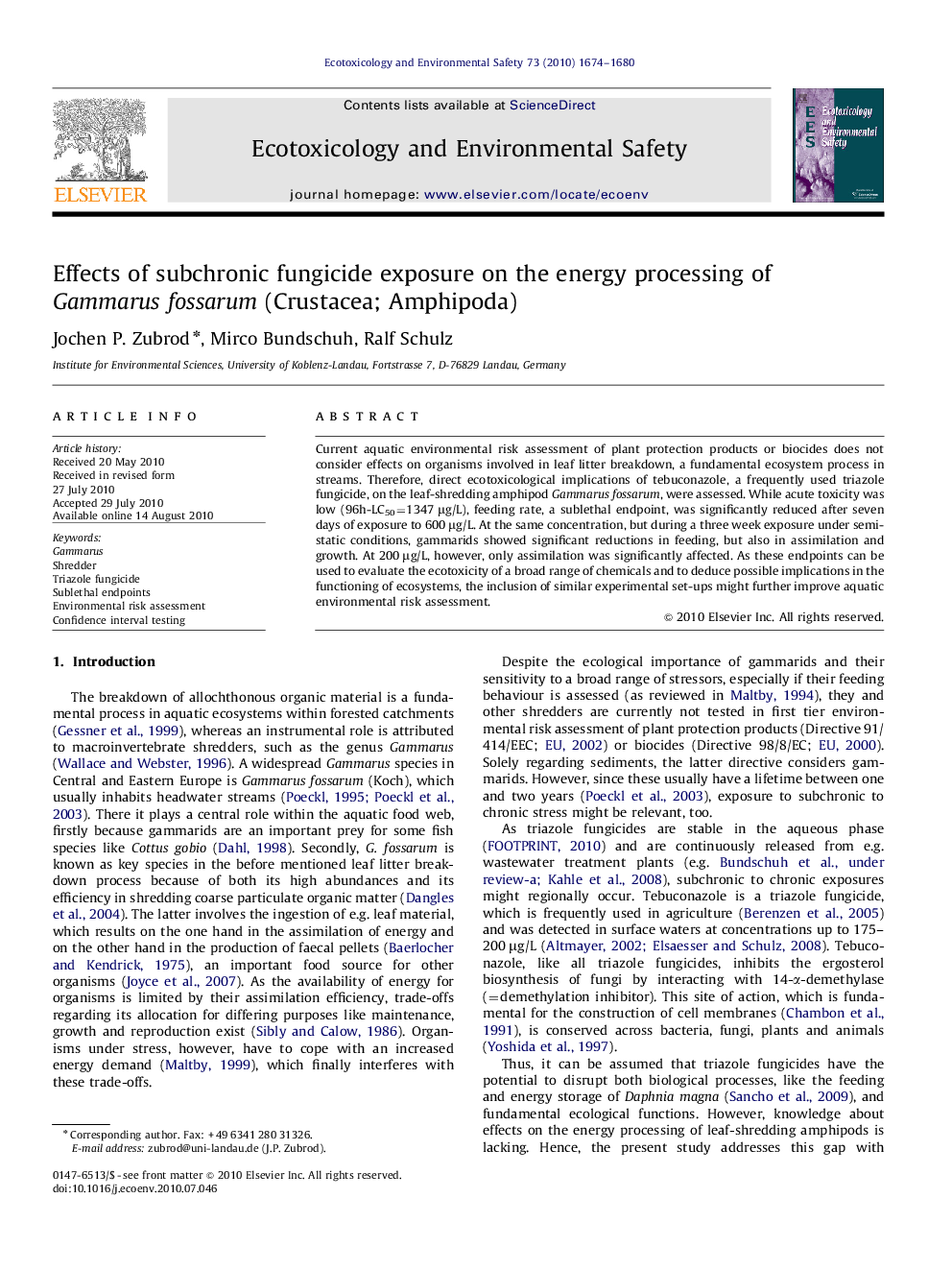| Article ID | Journal | Published Year | Pages | File Type |
|---|---|---|---|---|
| 4421724 | Ecotoxicology and Environmental Safety | 2010 | 7 Pages |
Current aquatic environmental risk assessment of plant protection products or biocides does not consider effects on organisms involved in leaf litter breakdown, a fundamental ecosystem process in streams. Therefore, direct ecotoxicological implications of tebuconazole, a frequently used triazole fungicide, on the leaf-shredding amphipod Gammarus fossarum, were assessed. While acute toxicity was low (96h-LC50=1347 μg/L), feeding rate, a sublethal endpoint, was significantly reduced after seven days of exposure to 600 μg/L. At the same concentration, but during a three week exposure under semi-static conditions, gammarids showed significant reductions in feeding, but also in assimilation and growth. At 200 μg/L, however, only assimilation was significantly affected. As these endpoints can be used to evaluate the ecotoxicity of a broad range of chemicals and to deduce possible implications in the functioning of ecosystems, the inclusion of similar experimental set-ups might further improve aquatic environmental risk assessment.
